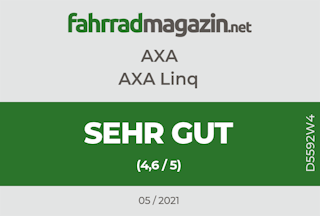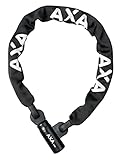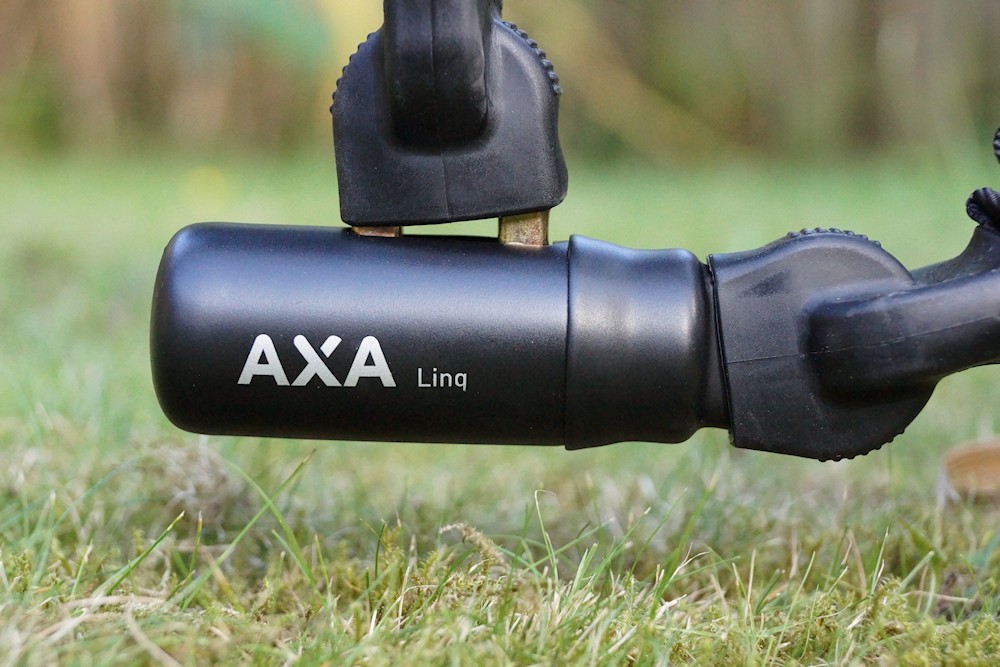
Heute schauen wir uns das Kettenschloss AXA Linq und Linq City etwas genauer an. Bei diesen beiden Varianten setzt der Hersteller auf das „Prinzip“ Kettenschloss. Wie sich die beiden Modelle unterscheiden werden wir neben der Handhabung, den technischen Daten und dem allgemeinem Eindruck im Alltag, klären.
Inhaltsverzeichnis
Lieferumfang und Verpackung AXA Linq City
Während das AXA Linq City in einer Plastiktüte geliefert wird, wird beim „großen“ Linq auf Kunststoff verzichtet und die Kette hat lediglich eine Banderole aus Pappe. Bei beiden Schlössern werden jeweils 2 Schlüssel mitgeliefert, mehr ist im Lieferumfang nicht enthalten. Eine Halterung gibt es für das Schloss nicht, dazu später mehr.

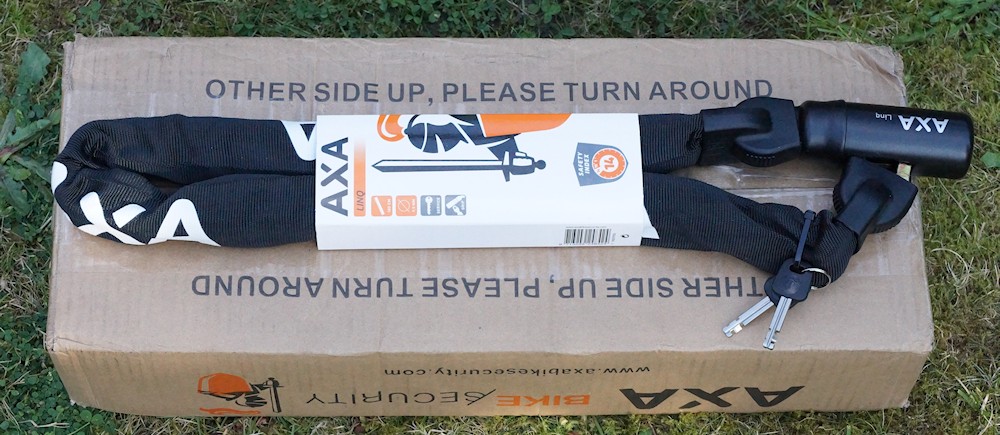
AXA Linq und dem AXA Linq City Test – Die Unterschiede
Die Schlösser sind vom Aufbau und von der Funktion her gleich, hier muss man sich nicht entscheiden. Lediglich das Gewicht ist ein wesentlicher und nicht unerheblicher Unterschied. Dieser Faktor resultiert aus dem Einsatz von unterschiedlich dickem Material.


Das AXA Linq hat im Vergleich zum Linq City wesentlich stärkere Kettenglieder. Das AXA Linq City hat Kettenglieder mit einem Durchmesser von 7 mm und das AXA Linq hat einen Durchmesser von 9,5 mm. Diese 1,45 mm machen sich bemerkbar. Wiegt das Linq City ca. 1.5 kg, bringt sein großer Bruder 2,6 kg auf die Waage.


Beide Schlösser bringen einen Sicherheitsindex von 9 und 15 mit. Maximalwert ist dabei der von AXA selbst vorgegebene Wert 15. Zum Vergleich, das AXA Cherto 95 hat einen Sicherheitsindex von 14, das AXA Toucan hat einen Index von 9 und das AXA FLC 800 ebenfalls einen von 9. Ein Sicherheitslevel von 15 ist demnach sehr stark und lässt auf eine hohe Sicherheit hoffen, mehr dazu später beim „Knacken vom AXA Linq City / Axa Linq“.

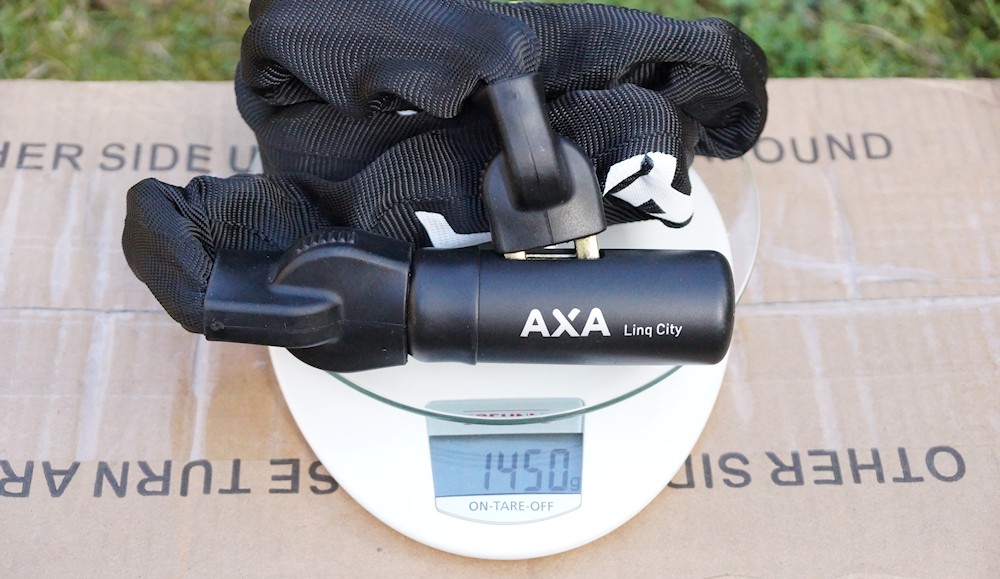
Verarbeitung und Haptik vom AXA Linq
Die Verarbeitung wirkt sehr hochwertig, es gibt keine Stellen die negativ auffallen. Keine Ecken, keine scharfen Kanten. In der Hand wirkt es durch sein Gewicht sehr wertig und sicher (Subjektive Wahrnehmung über das Gewicht). Durch die Polyesterummantelung werden der Rahmen und der Lack nicht verkratzt. Hier muss man jedoch sagen, als wir die Hülle angeschnitten hatten, war diese sehr schnell zerrissen. Der Zylinder und die Enden der Ketten sind mit Gummi ummantelt.
Befestigung am Fahrrad
Wie bei fast jedem Kettenschloss gibt es hier keine Halterung, unnötig sagen die einen, unpraktisch sagen die anderen. Da gehen die Meinungen sehr auseinander. Das Linq / City muss/kann also um die Sattelstange gelegt und so durch die Straßen transportiert werden. Alternativ kann man es auch mit in den Fahrradrucksack werfen. Mit einem Gewicht von 2,6 kg ist es nichts für Gewichtsoptimierer, dass City geht mit seinen 1,5 kg gerade noch in den Konkurrenzkamp mit z.B. dem ABUS Bordo Big (ca. 1,4 kg).

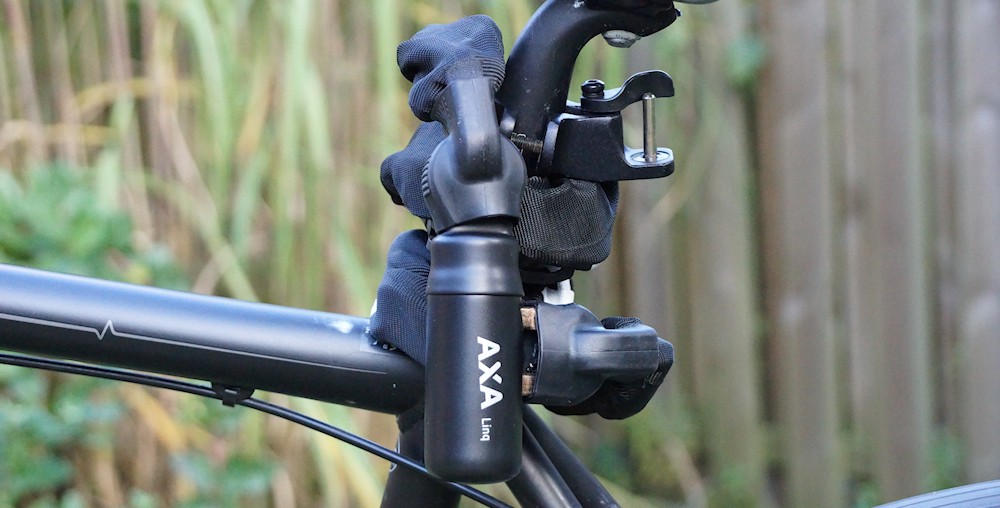
Das Fahrrad mit dem Kettenschloss abschließen
Mit einer Länge von einem Meter ist das Schloss lang genug um das Zweirad an einen Gegenstand anzuschließen. Die Kette ist sehr flexibel, daher muss man schauen wie man das Schloss am besten durch den Fahrradrahmen führt ohne dass es an der Fahrradkette verschmutzt. Den Schlüssel kann man nur aus dem Zylinder ziehen, wenn man diesen abgeschlossen hat. Dies verhindert ein versehentliches Abschließen wenn der Schlüssel einmal nicht dabei ist. Von der Handhabung ist das Linq ein klassisches Kettenschloss und bringt alle Eigenschaften mit, die man dieser Bauart zuschreibt.
AXA Linq (City) knacken
August 2016: An diesem Schloss beißen sich Diebe die Zähne aus, wir haben das Schloss mit verschiedenen Methoden versucht zu öffnen. Der kleine, handelsübliche Bolzenschneider hat fast den Geist aufgegeben und die Kettenglieder haben nur müde darüber gelacht. Nachdem wir die komplette Ummantelung entfernt haben, blicken wir auf gehärteten Stahl mit nur sehr wenigen Kratzern.
Kein Bolzenschneider, kein Aufbohren, kein Sägen. An dieser Stelle, Hut ab. In dem Video sieht man das AXA Linq City mit 7 mm Stahl und Sicherheitsindex 9 und nicht einmal das AXA Linq mit 9,5 mm und Sicherheitslevel 15.

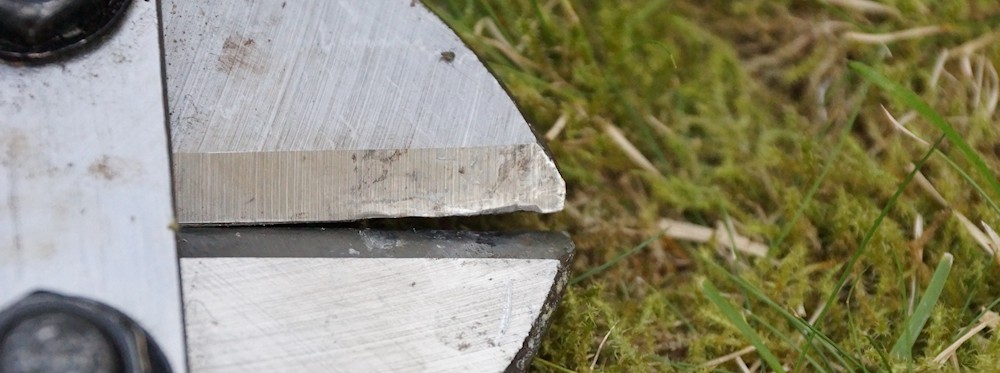
Da unser Bolzenschneider bereits bei dem City die „Grätsche“ gemacht hat, haben wir das 9,5-er erst gar nicht damit gekitzelt. Wir konnten es weder mit dem Bolzenschneider, nicht mit dem Bohrer aufbohren, noch mit einer Eisensäge ernsthaft beschädigen. Wir können nur raten, legt den Ersatzschlüssel gut weg. Trotz internationalem online Schlüsselservice wäre es sehr ärgerlich nicht direkt an sein Fahrrad zu kommen.


AXA Linq City / AXA Linq Test Update Mai 2021
Vorwort: Bei den Schlössern „AXA Linq City“ und „AXA Linq“ handelt es sich um zwei verschiedene Schlösser.
Da wir unsere Prüfmechanismen regelmäßig optimieren, fiel in einem neuen Testlauf auf, dass es bei den Produkten AXA Linq City und AXA Linq Unterschiede in punkto Sicherheit gibt. In einem früheren Test (August 2016) konnte das Schloss „Axa Linq City“ mit dem Bolzenschneider (600 mm, 24 Zoll, <= 30 HRC) nicht geöffnet werden. Bei der Wiederholung des Tests haben wir einen stärkeren Bolzenschneider verwendet und konnten das Schloss damit “knacken”.
Beim Modell „Axa Linq“ war dies bislang, trotz mehrerer Versuche, nicht der Fall. Deshalb korrigieren wir unsere Empfehlung vom Modell „Axa Linq City“ zum Modell „AXA Linq“. Das aktuelle Video zeigt die entsprechende Durchführung und das Ergebnis.
Fazit AXA Linq Test
Nachdem die letzten AXA Fahrradschlösser in unserem Test eher mäßig abgeschnitten haben, kann das AXA Linq sich wieder sehen lassen. Ein Fahrradschloss, das seinen Namen verdient trägt. Es gibt wenig an dem Schloss zu bemängeln, lediglich das hohe Gewicht und eine fehlende Halterung geben Abzüge in der B-Note. Man darf jedoch nicht vergessen, dass Sicherheit oft auch mit einem höheren Gewicht verbunden ist. Der Preis ist für das Schloss in unseren Augen mehr als gerechtfertigt. Von uns erhält das AXA Linq 4,6 von 5 möglichen Punkten und erreicht damit die Testnote „sehr gut“. Weitere Fahrradschlösser mit Testergebnissen sind auch im Fahrradschloss Test zu finden. Wir empfehlen auch, sich einmal mit dem Thema Fahrradversicherung auseinander zu setzen.

